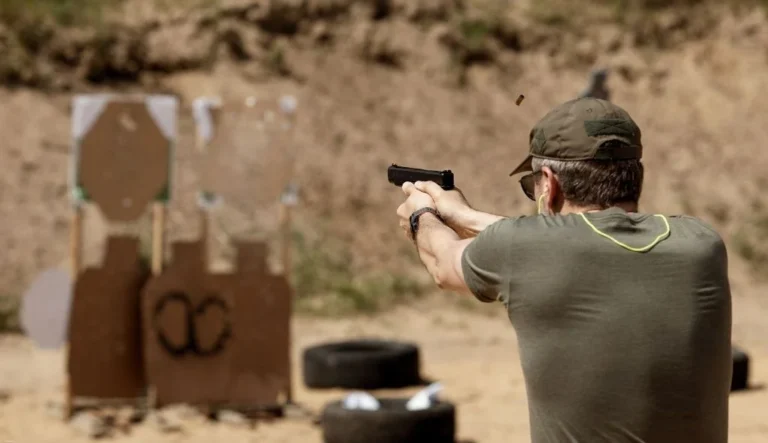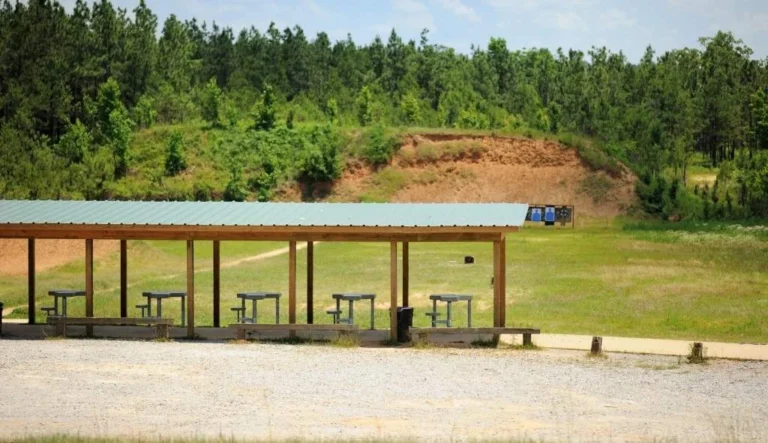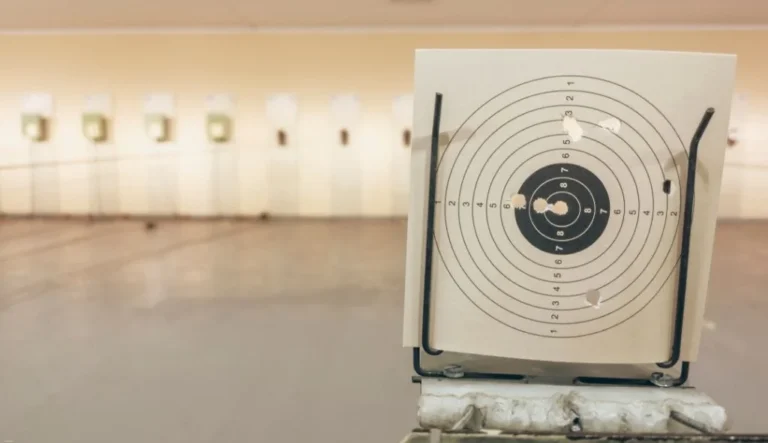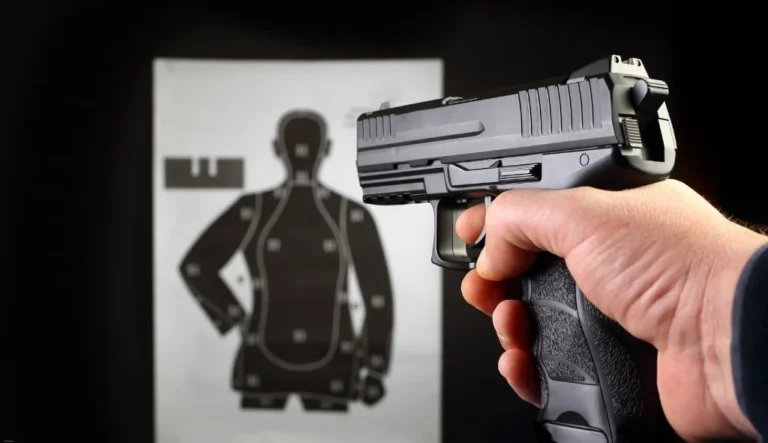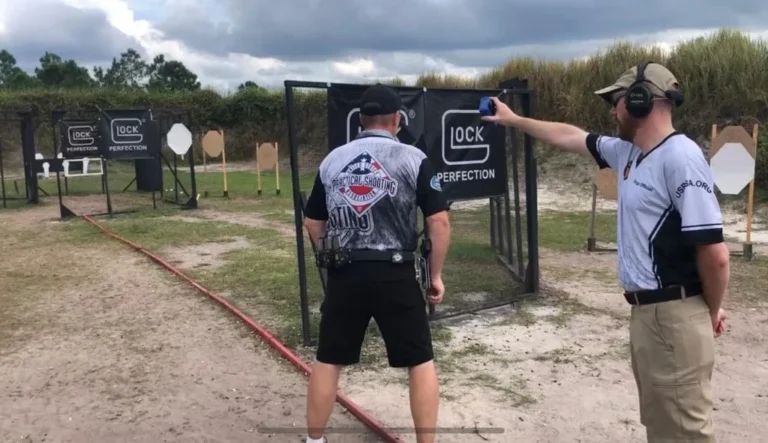How to Build a Backyard Shooting Range Backstop
Building a backyard shooting range backstop requires careful planning, proper materials, and safety considerations. A well-constructed backstop should be at least 12 feet tall, 4 feet wide at the top, and made of dirt or other bullet-absorbing materials to safely contain fired rounds.
Understanding the Importance of a Proper Backstop
A backstop is the most critical component of any shooting range, especially one in your backyard. Its primary purpose is to stop bullets and prevent them from traveling beyond the designated shooting area. A well-designed backstop ensures the safety of not only the shooter but also nearby properties and people.
Safety First
When building a backyard shooting range, safety should be your top priority. A proper backstop helps contain bullets within the range, reducing the risk of accidents or property damage. It’s essential to consider the following safety aspects:
- Height and width of the backstop
- Materials used in construction
- Angle of the backstop face
- Distance from the shooting position to the backstop
- Surrounding area and potential hazards
Legal Considerations
Before starting construction on your backyard shooting range, research local laws and regulations regarding firearms use on private property. Some areas may have restrictions on building shooting ranges or discharging firearms within certain distances of residential areas. Obtain any necessary permits or approvals before proceeding with your project.
Choosing the Right Location
Selecting the appropriate location for your backyard shooting range is crucial for safety and functionality. Consider the following factors when choosing a spot:
Natural Terrain
Look for areas with natural hills or slopes that can serve as part of your backstop. This can reduce the amount of work and materials needed to construct an effective barrier. Ensure the chosen location has enough space for both the shooting area and the backstop.
Distance from Buildings and Property Lines
Place your shooting range away from buildings, roads, and property lines. The exact distance may vary depending on local regulations, but generally, aim for at least 100 yards of clear space behind the backstop.
Accessibility
Choose a location that is easily accessible for bringing in materials and equipment during construction. Consider how you’ll transport targets, firearms, and other gear to and from the range.
Designing Your Backstop
A well-designed backstop is essential for containing bullets and ensuring the safety of your backyard shooting range. Here are the key elements to consider:
Height and Width
The backstop should be at least 12 feet tall and 4 feet wide at the top. This height helps prevent bullets from traveling over the top, while the width provides a sufficient surface area to catch rounds. The base of the backstop should be wider, creating a sloped face that helps absorb bullet impact.
Materials
Dirt is the most common and effective material for constructing a backstop. It’s inexpensive, readily available, and excellent at absorbing bullet impact. Other materials that can be used in combination with dirt include:
- Railroad ties
- Rubber mulch
- Sand
- Crushed gravel
Angle of the Face
The face of the backstop should be angled at approximately 35 to 45 degrees. This angle helps deflect bullets downward into the base of the backstop, reducing the risk of ricochets and improving overall safety.
Drainage
Proper drainage is essential to prevent water accumulation in your backstop. Incorporate a slight slope at the base of the backstop to allow water to drain away from the shooting area. This helps maintain the integrity of the structure and prevents erosion.
Construction Process
Building a backyard shooting range backstop requires careful planning and execution. Follow these steps to construct a safe and effective backstop:
Step 1: Site Preparation
Clear the chosen area of vegetation, rocks, and debris. Level the ground where the backstop will be constructed, ensuring a stable foundation.
Step 2: Marking the Footprint
Use stakes and string to mark the outline of your backstop. This will guide you during the construction process and help maintain the desired shape and size.
Step 3: Building the Base
Start by creating a wide base for your backstop. If using railroad ties or other supportive materials, place them at the base of the backstop area. Begin piling dirt or your chosen material to form the foundation of the structure.
Step 4: Layering and Compacting
Add layers of material, compacting each layer as you go. This helps create a solid, stable structure that can withstand repeated bullet impacts. Use a plate compactor or hand tamper to ensure each layer is firmly packed.
Step 5: Shaping the Backstop
As you build up the layers, shape the backstop to achieve the desired height and angle. Use a level and protractor to maintain the correct slope on the face of the backstop.
Step 6: Adding Reinforcement
If using railroad ties or other supportive materials, incorporate them into the structure as you build. Place them horizontally at regular intervals to provide additional stability and help contain the fill material.
Step 7: Final Shaping and Compaction
Once you’ve reached the desired height, perform a final shaping of the backstop. Ensure the face is smooth and at the correct angle. Compact the entire structure one last time to settle any loose material.
Step 8: Adding a Protective Layer
Consider adding a layer of rubber mulch or crushed gravel to the face of the backstop. This can help reduce dust and make bullet retrieval easier if you plan to recycle lead.
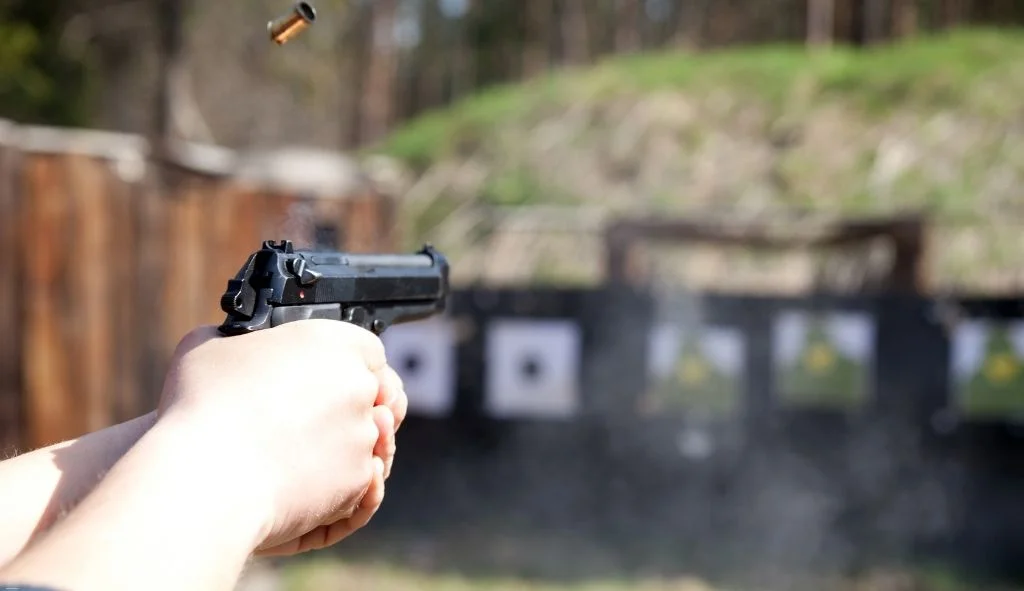
Maintaining Your Backstop
Regular maintenance is crucial to ensure the longevity and safety of your backyard shooting range backstop. Here are some key maintenance tasks:
Inspection
Regularly inspect your backstop for signs of erosion, damage, or wear. Look for areas where bullets may have created channels or weak spots in the structure.
Repairs
Address any damage promptly. Fill in eroded areas with additional material and compact thoroughly. Replace any damaged railroad ties or other supportive elements.
Vegetation Control
Keep the backstop and surrounding area clear of vegetation. Plants can weaken the structure and create hiding spots for wildlife, which could be a safety hazard.
Lead Management
If you plan to shoot lead ammunition, implement a lead management plan. This may include periodically removing and properly disposing of lead-contaminated soil or using lead-free ammunition.
Additional Safety Measures
While a well-constructed backstop is essential, there are additional safety measures you can implement to enhance the security of your backyard shooting range:
Side Berms
Consider adding side berms to your range. These can help contain rounds that may stray off target and provide additional protection for the surrounding area.
Shooting Platform
Build a designated shooting platform or bench. This helps control the direction of fire and ensures shooters are always aiming towards the backstop.
Range Rules
Establish and enforce clear range rules. Post these rules prominently at the entrance to your range and ensure all users understand and follow them.
First Aid Kit
Keep a well-stocked first aid kit easily accessible at your range. While proper safety measures should prevent accidents, it’s always best to be prepared.
Environmental Considerations
When building and using a backyard shooting range, it’s important to consider the environmental impact:
Lead Contamination
Lead from ammunition can accumulate in soil and potentially contaminate groundwater. Consider using lead-free ammunition or implementing a lead management plan to minimize environmental impact.
Noise Pollution
Be mindful of noise levels, especially if you have nearby neighbors. Consider using sound-dampening materials or limiting shooting hours to reduce disturbance.
Wildlife Protection
Ensure your range doesn’t negatively impact local wildlife. Avoid areas with known animal habitats and take measures to prevent animals from entering the range area.
Frequently Asked Questions
How much does it cost to build a backyard shooting range backstop?
The cost can vary widely depending on the size of the backstop, materials used, and whether you do the work yourself or hire contractors. A basic dirt backstop could cost anywhere from $500 to $5,000 or more.
How far should a backstop be from the shooting position?
The distance depends on the type of firearms you plan to use. For handguns, a minimum of 25 yards is recommended. For rifles, aim for at least 100 yards if possible.
Can I use old tires in my backstop?
While old tires can be used, they’re not recommended due to potential environmental concerns and the risk of ricochets. Stick to earth, sand, or rubber mulch for safer options.
Do I need to get my backstop professionally designed?
While not always necessary, consulting with a professional can help ensure your backstop meets safety standards and local regulations. This is especially important for larger or more complex ranges.
How often should I maintain my backstop?
Inspect your backstop after each use and perform thorough maintenance at least once a year. More frequent maintenance may be necessary depending on usage and weather conditions.

